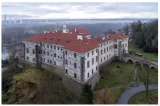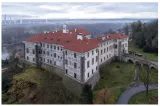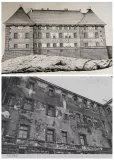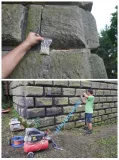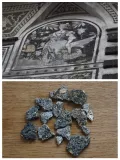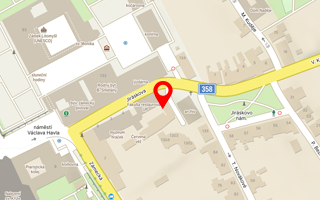Permalink: https://hdl.handle.net/10195/84442
The survey was conducted by MgA. Kateřina Krhánková, MgA. Zuzana Wichterlová, MgA. et Mgr. Jana Waisserová, MgA. Josef Červinka, Mgr. Jiří Bláha, Mgr. Pavel Waisser, Ph.D.
Expert cooperation: Ing. Karol Bayer, Ing. Jiří Vidman
The two-storey building of the castle grows from a massive plinth, articulated by distinctive stone bosses. The most generous northern wing with its representative interiors is covered with figural sgraffito decoration, divided into horizontal bands and fields. The façade is closed by a distinctive lunette cornice with cut-outs, the corners are lined with stone bossing. The sgraffito on the lunette cornice is ornamental, some fields on the façade are filled with figurative scenes. There are 33 preserved scenes or their fragments on the façade.
Extensive art-historical research in the archival funds helped to trace the graphic patterns, describe the context of the sgraffito's creation and previous restoration interventions. The decoration of the sgraffito took place in two phases during the Renaissance, in the 1660s and 1690s. Further interventions were not identified until the 20th century, when the sgraffito was conservatively restored by Jindřich Čapek. In the 1970s, restorers partly continued Čapek's concept - in places repeating neutral, distinctly different fields. However, for the most part they approached the façade synthetically and made reconstructions.
The restoration survey focused on valuable plaster and colour layers, including stone elements. The survey included photogrammetric documentation of the façade, including surface relief and hypsometry. The survey included a description of the original technique, secondary interventions, current condition and causes of damage. The findings were plotted on the photogrammetric images. The methods used included inspection of the sgraffito in diffuse and side light, stratigraphic probes into the paint and plaster layers, percussion survey and technological analysis. Partial tests of technological conservation procedures were carried out (in particular cleaning and consolidation tests). The restoration survey aimed at preparing documents to determine the procedure and concept of a comprehensive restoration intervention. The condition of the sgraffiti from the Renaissance phase is in a state of disrepair.
